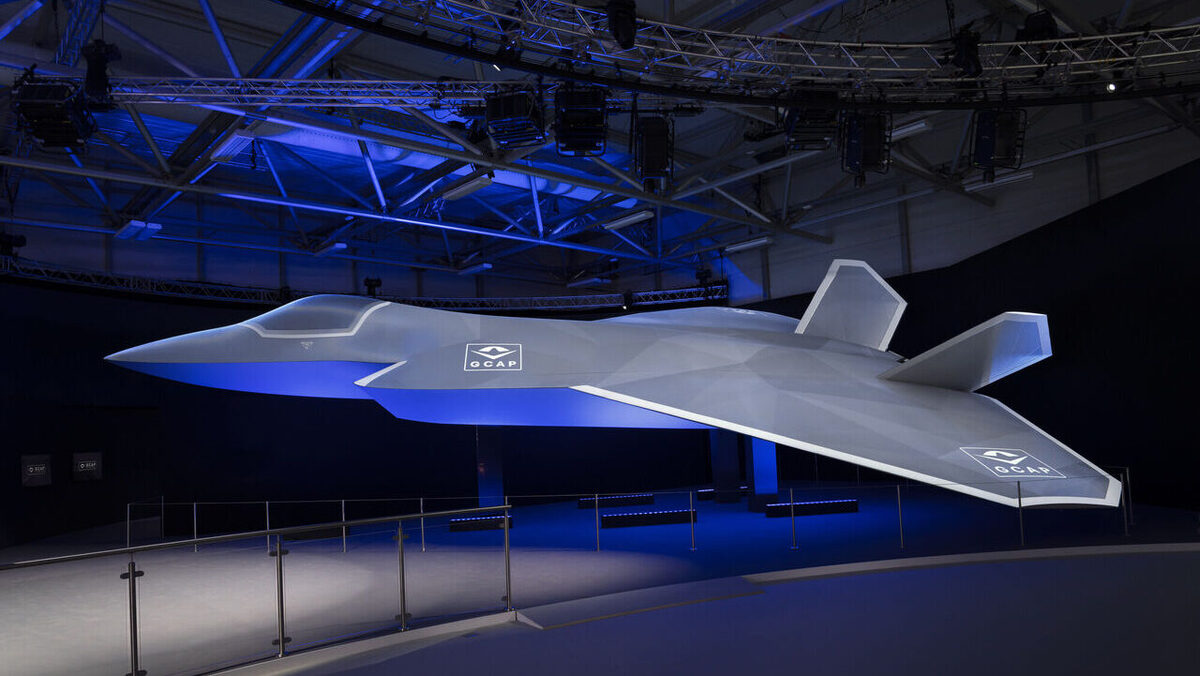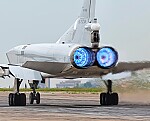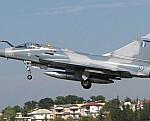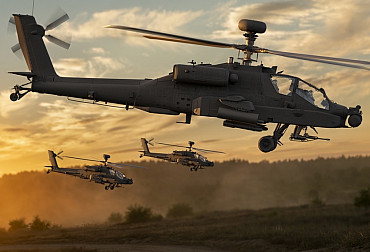The future of the 6th generation fighter aircraft projects is uncertain
The Global Combat Air Programme (GCAP), a cooperative project involving the United Kingdom, Italy, and Japan, an official offshoot of the Tempest programme unveiled by the UK Ministry of Defence in 2018, is proceeding at a "steady pace" towards the launch of its design and development phase, still scheduled for 2025. However, multiple questions arise not just for the GCAP, but for the US NGAD and F/A-XX programmes as well as for the French, German, and Spanish FCAS.

At the Farnborough Air Show in Great Britain, BAE Systems, Leonardo, and Mitsubishi Heavy Industries, the three main manufacturers involved in the project, unveiled a new design for the 6th generation fighter aircraft on which this system of systems is to be based. At 22.4 meters long and with a wingspan of 19.2 meters, the aircraft has larger dimensions than previous versions, comparable to those of the General Dynamics F-111 Aardvark. This is supposed to improve its aerodynamic profile, according to BAE Systems
"Engineers from across BAE Systems, Leonardo, and Mitsubishi Heavy Industries are working together under a collaboration agreement on the design and development of the future combat aircraft using a range of innovative digital tools and techniques, including computer-based modeling and virtual reality to evolve the aircraft’s design during its concepting phase," says the company in its press release.
It adds that the GCAP, "set to be in service in 2035, will be one of the world’s most advanced, interoperable, adaptable and connected fighter jets in service, boasting an intelligent weapons system, a software-driven interactive cockpit, integrated sensors, and a powerful next-generation radar capable of providing 10,000 times more data than current systems, giving it a battle-winning advantage."
However, this timetable is not carved in stone. Indeed, the new British Prime Minister, Labour's Keir Starmer, has said that he wants to formally underline the importance of GCAP to the United Kingdom. But his government, in particular Armed Forces Minister Luke Pollard, has been much more cautious about the future of the programme, for which London plans to invest £2.5 billion until 2025. In reality, everything will depend on the Strategic Defence Review, which George Robertson has just been appointed to lead, and which we have discussed in one of our earlier articles this month.
"It is a really important program for us. It’s important for our partners in Japan and Italy and we’re meeting both those partners next week to underline that. But it’s not right for me to prejudge what might happen in the Defence Review," said Mr. Pollard on 19 July. And he suggested that Robertson should be free to consider all options. "We need cutting-edge capabilities. We need to make sure that when we’re procuring systems, high-end systems, future systems that we need to keep our people safe, we do it in the most cost-effective way and that is by working with our partners," he added.
One question is whether the UK needs to rethink its priorities to prepare for a potential war with Russia, which some believe could happen in three to five years' time. For Justin Bronk, senior research fellow for airpower and technology at the Royal United Services Institute, a UK defense think tank, "GCAP is completely impossible if there’s a war in Europe in the coming five years because the global economy will have completely tanked. It’s notable that the US Air Force is saying it can’t potentially afford NGAD (Next Generation Air Dominance), and given that NGAD already has prototypes flying around is their third or fourth attempt to build a combat stealth aircraft, they’re very good at it and it’s US funding, if the US thinks it is maybe unaffordable, then I think we probably need to look very carefully at how we’re going to do this in Europe. But for the immediate term, you’ve got to stop the Russians from trying to test NATO militarily in this decade, otherwise, everything else is kind of irrelevant," he said.
In addition, a Royal Air Force official told the press, on condition of anonymity, that he was not surprised by Pollard's position: "It is a very big investment. In orders of magnitude terms, over the next 10 years, investment in GCAP is about a quarter of what we will invest in the Army’s equipment procurement plan," he said.
While awaiting the conclusions of the UK Strategic Defence Review, the US Air Force is considering the future of its NGAD programme, launched in 2015 to replace its 5th generation F-22A Raptor air superiority aircraft. A demonstrator has already made a maiden flight in 2020, and a contract should soon be awarded to one of the two manufacturers still in the running, namely Lockheed Martin and Boeing, to finalize the design. As well as developing a 6th generation combat aircraft, this programme also includes the purchase of loyal wingman-type UAVs as part of the CCA (Collaborative Combat Aircraft) project.
For some time now, however, there has been talk of rethinking the NGAD, which is supposed to offer a revolutionary technological leap forward. With total investment expected to be at least $100 billion for just 200 aircraft, it appears to be far too expensive. All the more so as there are other priorities to fund, such as the B-21 Raider strategic bomber and the Sentinel intercontinental ballistic missile. "If you look at what we do in our five-year plan — that is on the Hill now — to our foundational accounts in the out years, it’s clear we did something there that’s not going to be, you know, sustainable. We’ve got to fix that problem too. So we’ve got a number of affordability issues over the five-year plan that we had to address. And we also have to go to look at and verify, if you will, that we had the right concept," said Frank Kendall, Secretary of the US Air Force, on the sidelines of the Farnborough Airshow on 20 July.
We also need to ensure that the capabilities of the new fighter are in line with the threats it will face. Also in the United States, the future of the F/A-XX, the US Navy's counterpart to the NGAD, is clearly under threat, as the Senate Committee on Armed Services wants to cut 90% of its funding under the 2025 budget. While this decision has yet to be confirmed, the fact remains that, like the US Air Force, the US Navy has other more pressing priorities to fund.
For the moment, the Future Air Combat System, a cooperative project between France, Germany, and Spain, is moving ahead, with phase 1B officially launched in April 2023. But the equation is likely to become even more complicated when it comes to the next stage, that of demonstrators. But here, beyond the industrial aspects, its continuation will above all be a matter of political will. And money.








